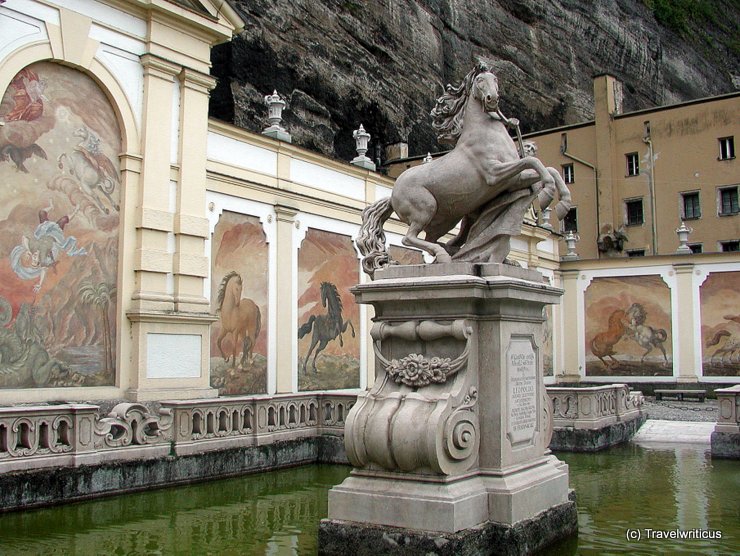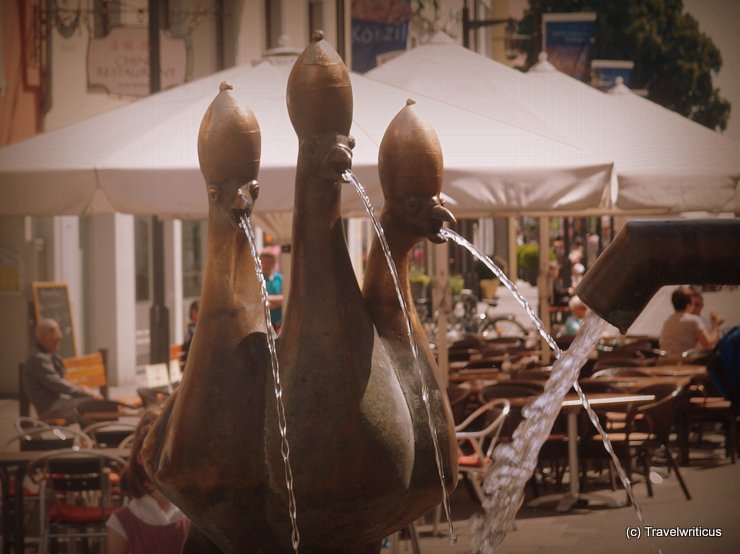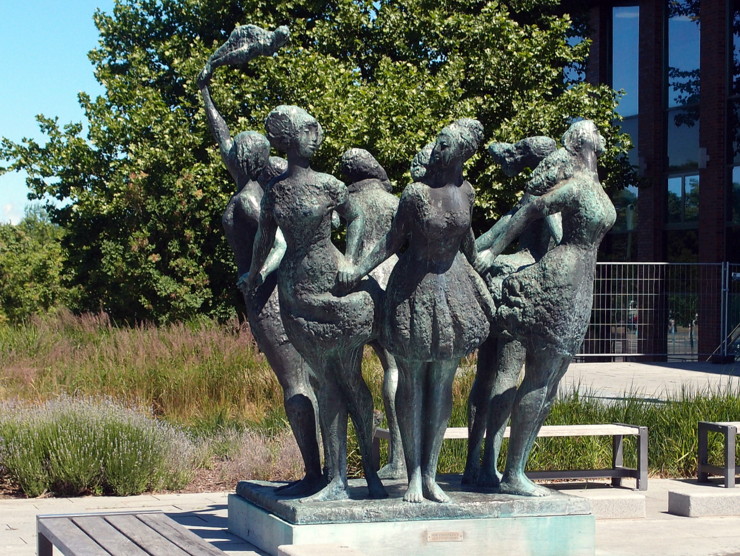
It was a cold day when I took this photo of a frozen fountain on the grounds of the Würzburg Residence (Würzburger Residenz). The Baroque palace saw its completion in 1744. Today, it is part of the UNESCO World Heritage List.
You only see what you know (Goethe)

It was a cold day when I took this photo of a frozen fountain on the grounds of the Würzburg Residence (Würzburger Residenz). The Baroque palace saw its completion in 1744. Today, it is part of the UNESCO World Heritage List.

In the Bohemian town of Jindřichův Hradec, a castle of the same name is located. Its former German name was Neuhaus (New House). The literal translation of the Czech name means Henry Castle. Worth seeing is the roundel from 1596, which is counted among the principal works of the Bohemian Renaissance. [German]

The lindworm fountain (Lindwurmbrunnen) is the landmark of Klagenfurt am Wörthersee. In addition, the lindworm is also part of the local city arms. The sculpture dates back to the 16th century and refers to the foundation legend of the city. [German]

The Mägdebrunnen (Maidservants Fountain) in Stralsund is a work by the sculptor Günter Kaden. You find the fountain in the Fährstraße, a lane in the inner city of Stralsund. [German]

The Wild Man Fountain (Wilder-Mann-Brunnen) has existed since the beginning of the 17th century. Its water basins kept the fish fresh on the fish markets. Today, the fountain stands on the Max Reinhardt Square opposite the Grand Festival Hall. [German]

This water basin for washing horses (Pferdeschwemme) stands next to Sigmund’s Gate (Sigmundstor). The basin, generally known as Hofmarstallschwemme, was designed and built in 1693 by Johann Bernhard Fischer von Erlach.

The Goose Girl Fountain (Gänsemädchenbrunnen) displays a girl with three geese. Its creator was the Czech sculptor Antonín Pavel Wagner. The fowls refer to the first site of the fountain, which was the former poultry market of the city.

The Kaiserbrunnen (Emperor Fountain) in Konstanz (Constance) was created by sculptor Hans Baur in 1897. After a redecoration by Gernot Rumpf at the end of the 20th century, it refers to historical events related to Constance.

The Donkey Fountain (Eselsbrunnen) on the Old Market (Alter Markt) in Halle (Saale) dates back to 1913. Its motiv – a man with a donkey walks over a rug of roses – refers to an old but fun legend. [German]

Decorated Easter Wells (Osterbrunnen) are a German tradition dating back to the early 20th century. The first examples developed in Franconian Switzerland (Fränkische Schweiz). In the meantime, more and more Easter Wells and Fountains have arisen in other parts of Germany.

This sculpture in the city of Rostock named ‘Seven proud sisters are kissed by one sea’ (Sieben stolze Schwestern küsst das eine Meer) was created by Reinhardt Dietrich in 1985. It portrays the peaceful coexistence of the seven countries surrounding the Baltic Sea.

The Wittelsbach Fountain (Wittelsbacher Brunnen) attracted my attention by a sculpture of an angel wearing a Tyrolean hat. The fountain was created by Jacob Bradl. Three angels represents those three rivers Passau is known for: Danube, Inn, Ilz. E.g. the small Tyrolean guy represents the Inn river.